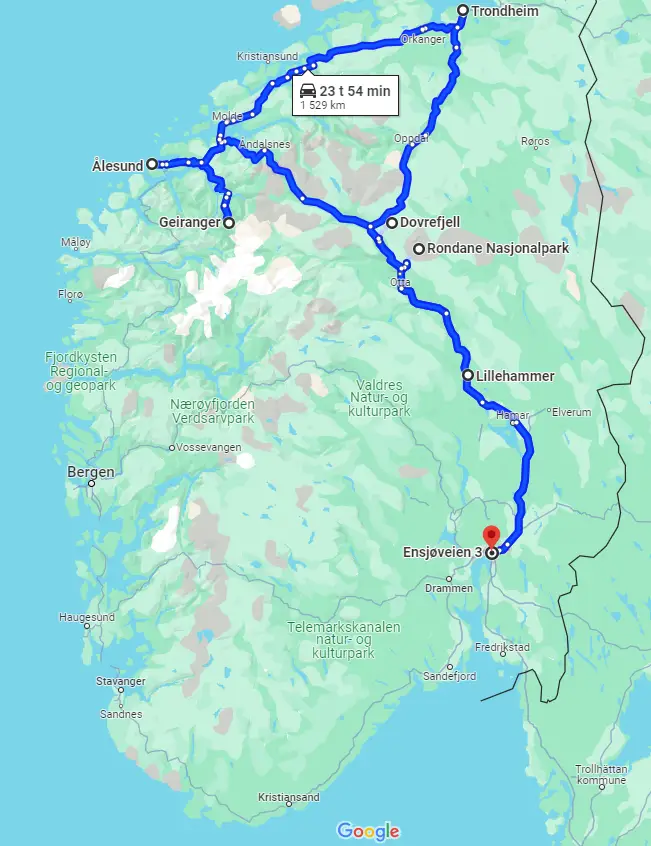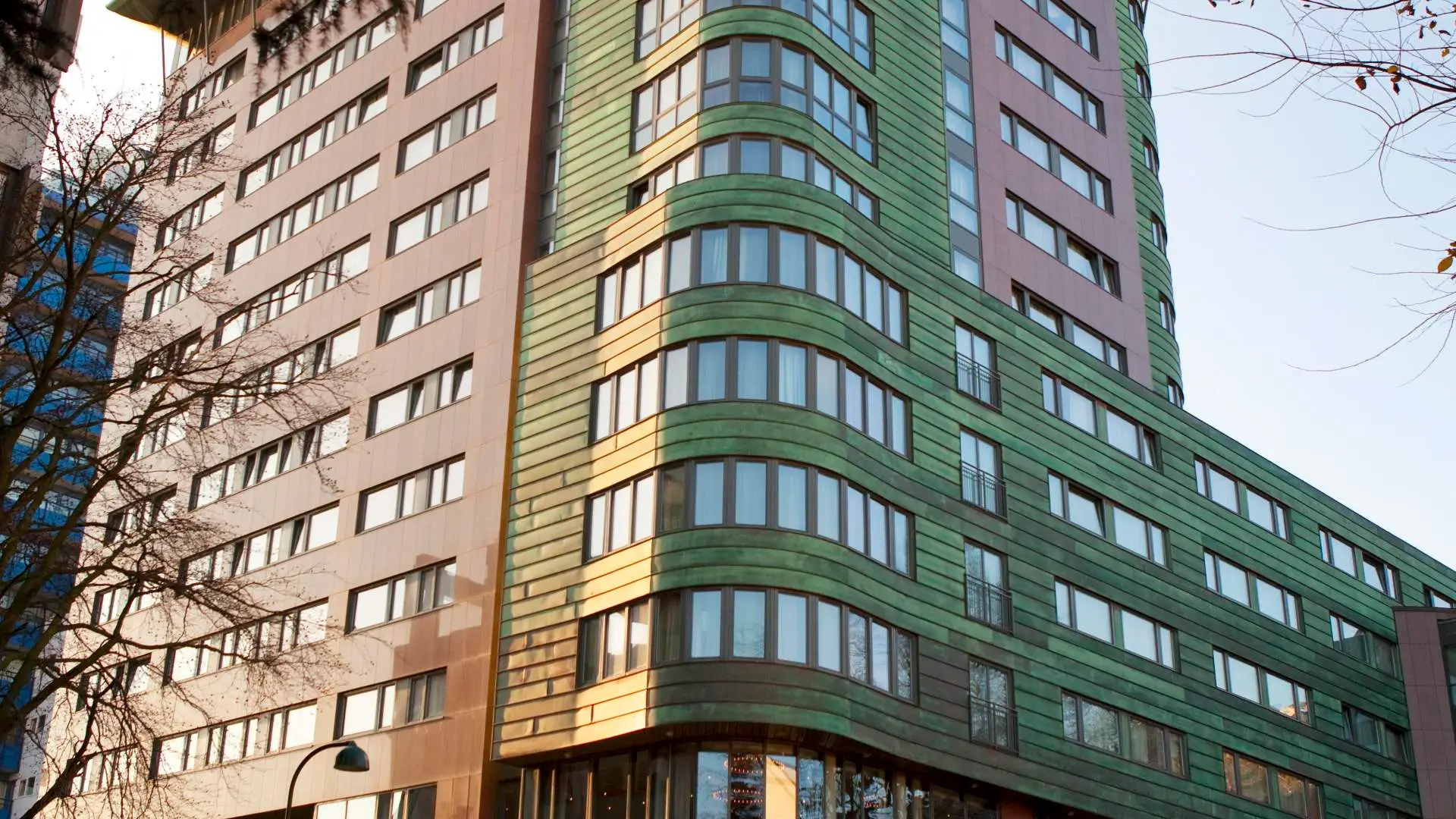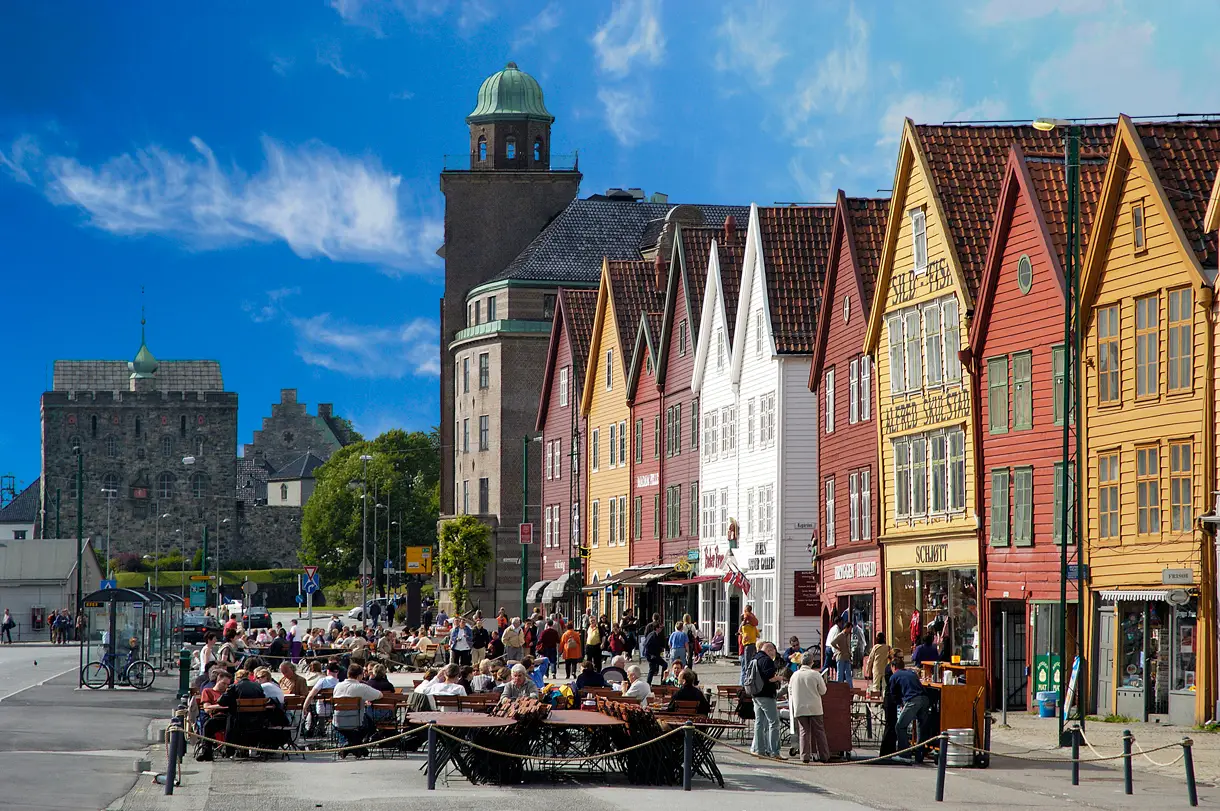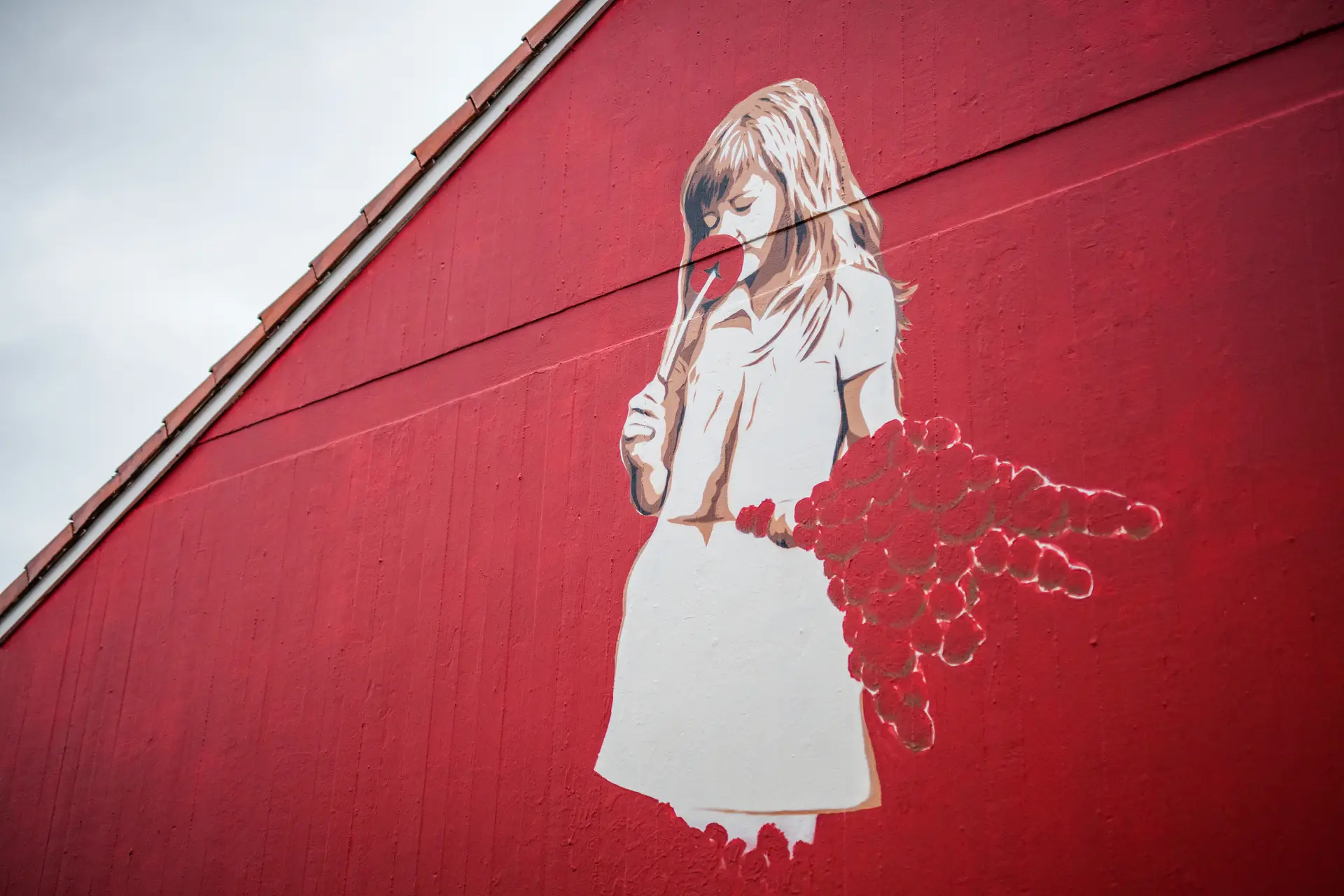Day 1: Arrival in Oslo – Ekeberg Camping
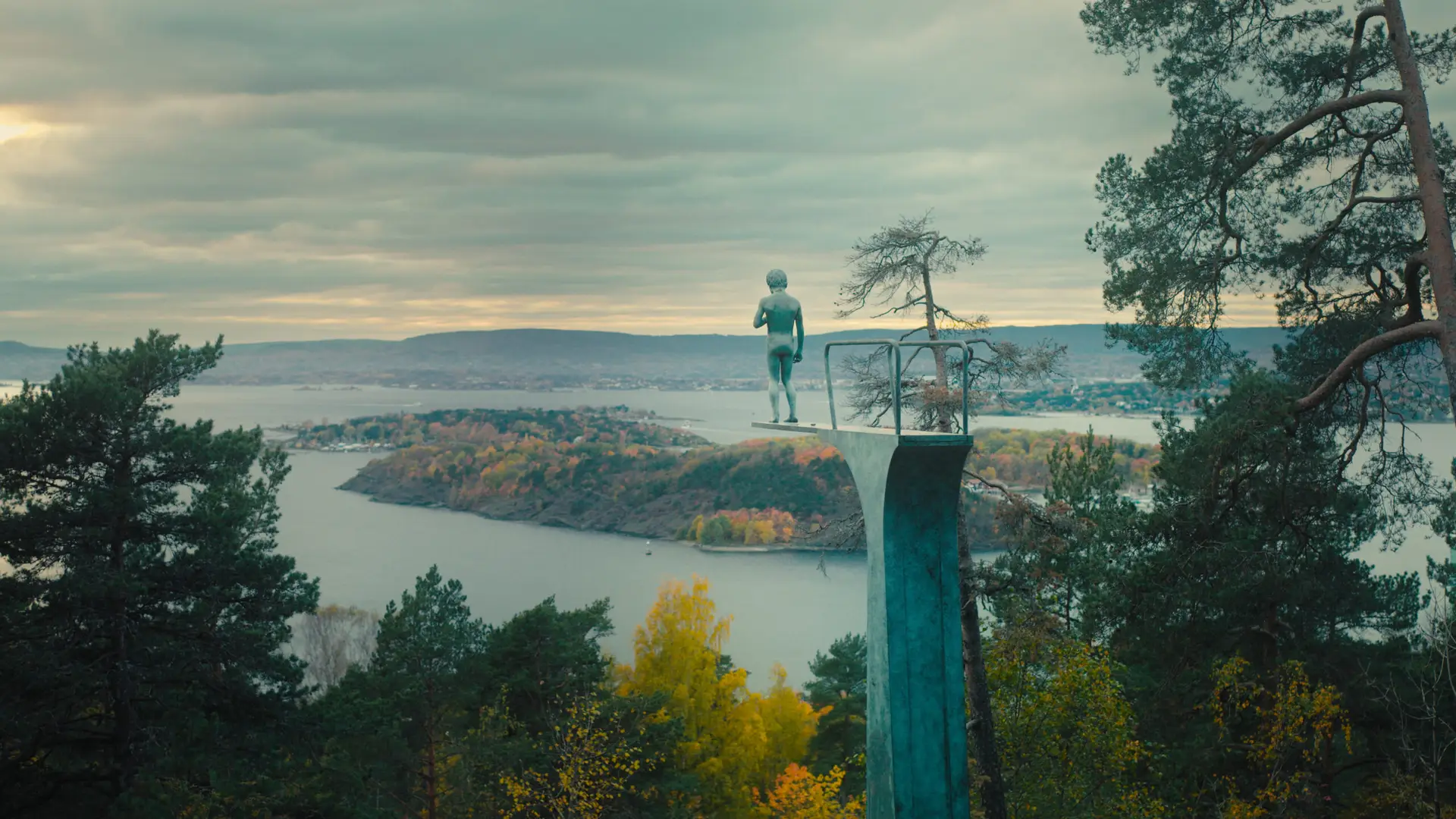
Oslo, the vibrant capital of Norway, offers a rich blend of history, art, and natural beauty, making it a must-visit destination for travelers. The city is known for its green spaces, modern architecture, and a plethora of museums and attractions that cater to all interests.
One of the city’s most famous attractions is the Vigeland Sculpture Park, part of Frogner Park, featuring over 650 sculptures by Gustav Vigeland in bronze, granite, and wrought iron. This park is open year-round and is a testament to Vigeland’s lifework.
For those interested in maritime history, the Oslofjord offers a unique perspective of the city from the water. Various cruise options are available, ranging from guided tourist boats to more adventurous kayaking experiences. Nearby, the Fram Museum provides an in-depth look at polar exploration, featuring the ship Fram, used by Norwegian explorers like Fridtjof Nansen and Roald Amundsen.
Adjacent to the Fram Museum is the Kon-Tiki Museum, dedicated to Thor Heyerdahl’s balsa wood raft expedition from Peru to Polynesia, showcasing the raft itself and other vessels used by Heyerdahl.
The Holmenkollen Ski Jump and Museum, another iconic site, delves into 4,000 years of skiing history and offers panoramic views of Oslo from the top of the ski jump.
Aker Brygge, a stylish waterfront development, is perfect for shopping and dining, featuring a mix of old shipyard buildings and modern architecture. It becomes particularly lively in summer with al fresco dining options.
Akershus Fortress, with its rich history of sieges and royal residence, offers guided tours in summer, allowing visitors to explore the palace and the fortress’s ramparts and bastions.
The Royal Palace, the official residence of the Norwegian monarch, offers guided tours that showcase its elegantly furnished state rooms and halls. The changing of the guard at 13:30 is a sight not to be missed.
For a modern cultural experience, the Astrup Fearnley Museum of Modern Art presents an extensive collection of international contemporary art in a striking building designed by Renzo Piano.
These attractions are just the tip of the iceberg in what Oslo has to offer. From historical sites and cultural museums to outdoor activities and stunning natural landscapes, Oslo caters to all types of travelers. For more detailed information and planning your visit, check out the official tourism websites for Oslo.
Pick up campervan:
In Oslo Centrum
Stay:
Ekeberg Camping Ekeberg Camping (approx. 10 minutes from the city center and pick up location).
Explore:
Ekeberg Sculpture Park for a blend of art and nature or take public transportation down to Akerbrygge & Tjuvholmen to explore parts of the city.
Eat:
Dinner at Ekebergrestauranten Ekebergrestauranten for a great view of Oslo or one of the many options at Aker Brygge.
-¤-
Day 2: Oslo to Lillehammer – Lake Mjøsa Camping
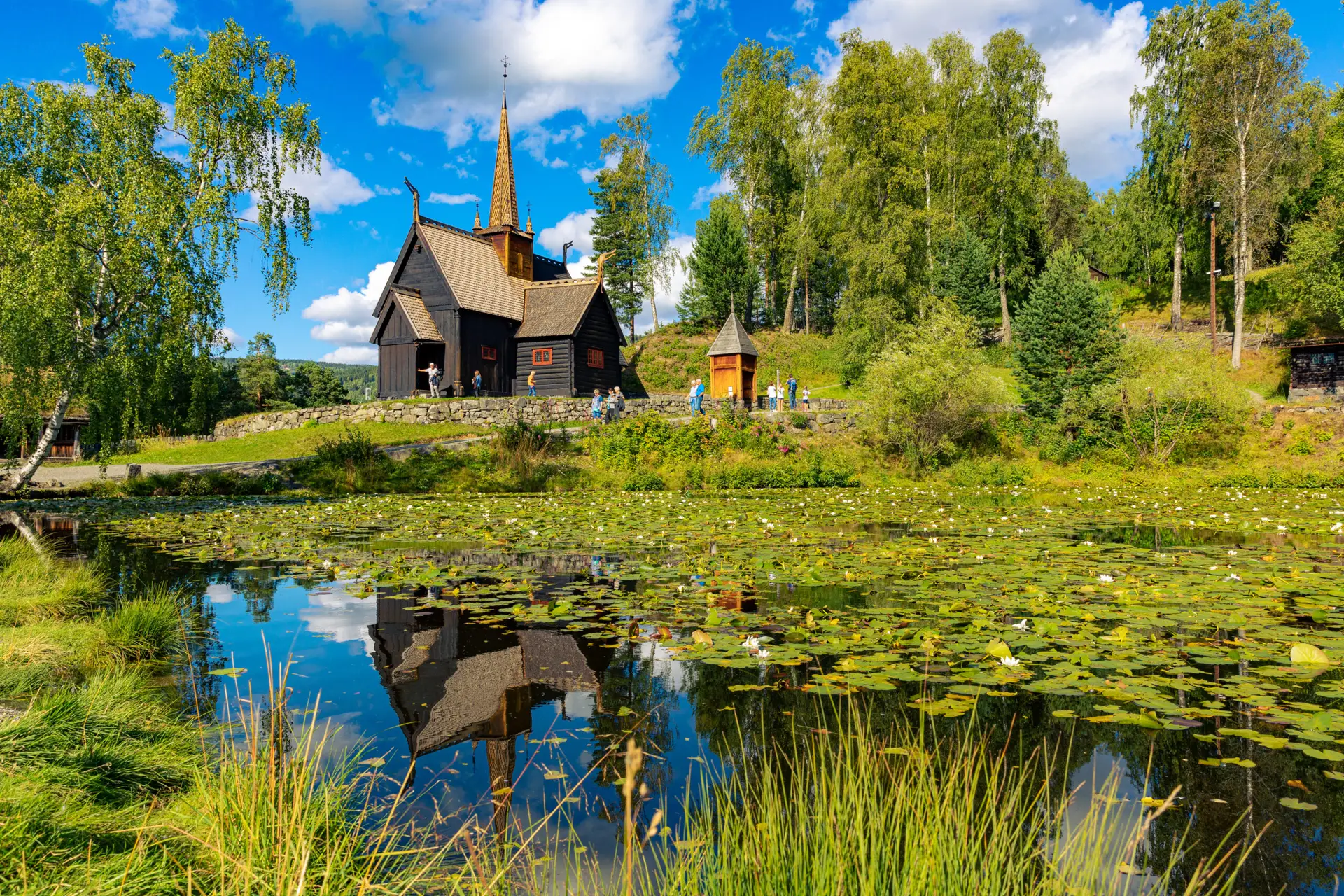
– Foto: Sven-Erik Knoff – Visit Norwayi
Lillehammer, located in the heart of Norway, offers an incredible array of outdoor adventures and cultural experiences, making it a perfect holiday destination for those seeking both excitement and relaxation amidst stunning natural scenery. The town is surrounded by spectacular landscapes and is within easy reach of national parks such as Rondane, Jotunheimen, and Langsua, offering endless opportunities for hiking, cycling, skiing, and horseback riding. For families and thrill-seekers, the Hunderfossen Adventure Park and Lillehammer’s several ski resorts provide fun activities year-round.
The region is also celebrated for its rich food heritage, featuring local delicacies like moose, locally grown vegetables, fish, cured meat, and the traditional Norwegian flatbread, lefse. A must-try is the iconic “brunost” (brown cheese), embodying the essence of Norwegian cuisine.
Cultural aficionados will find Lillehammer’s museums and cultural centers, such as the renowned open-air Maihaugen Museum and the Norwegian Olympic Museum, both enriching and inspiring. Maihaugen offers a glimpse into life in the old days, while the Olympic Museum provides an exciting journey through Olympic history.
For those interested in exploring the local arts scene, the Lillehammer Art Museum presents a blend of 19th-century Norwegian art and contemporary works. The museum’s architecture and sculpture garden, designed in collaboration with Snøhetta and artist Bård Breivik, are notable highlights.
Moreover, Lillehammer’s proximity to ski resorts like Hafjell allows visitors to enjoy winter sports at Olympic-standard slopes. The resort caters to all skill levels, from beginners to experienced skiers, and features dedicated areas for children and terrain parks.
In addition to the wealth of outdoor and cultural activities, Lillehammer and its surrounding areas offer a variety of accommodations, from charming hotels to modern resorts, ensuring a comfortable stay for every visitor.
For more detailed tourist information, including activities, hotels, and dining options in Lillehammer, visit official tourism websites and resources like Visit Norway and Tripadvisor
Drive:
Head towards Lillehammer (approx. 2.5 hours drive).
Stop by Kistefos Museum for modern art and architecture (1-hour detour).
Explore:
Lillehammer and visit the Maihaugen Open-Air Museum .
Eat:
Lunch in Lillehammer at Nikkers, TripAdvisor – Nikkers, Lillehammer.
Stay:
Drive to a campsite near Lake Mjøsa (Norway’s largest lake), free camping (Park4night – Lillehammer) or stay at Mjøsa Ferie og Fritidssenter.
-¤-
Day 3: Lillehammer to Rondane National Park

Rondane National Park, established in 1962 as Norway’s first national park, is a haven for nature enthusiasts and outdoor adventurers. The park is known for its wild reindeer populations, which are among the last remnants of Europe’s original wild mountain reindeer. The park offers a diverse landscape of high mountain peaks, deep valleys, and a network of hiking trails leading through this pristine wilderness.
Visitors to Rondane can engage in a variety of activities throughout the year. The park’s extensive network of trails caters to both casual walkers who prefer easy routes to enjoy the views and serious hikers looking for multi-day treks across rugged terrains. The changing seasons offer distinct experiences, from snow-covered landscapes and skiing opportunities in the winter to blooming flora and wildlife sightings in the summer. It’s important to be prepared for snow showers even in July, highlighting the park’s unpredictable mountain weather.
For those planning a trip, Rondane is accessible by car, bus, or train, with several entry points like Strømbu, Høvringen, Mysusæter, and Spranget, making it easy to start your adventure in the heart of the Norwegian wilderness. Accommodations range from mountain lodges to cabins, offering options for every type of traveler.
The park is also a part of the Norwegian Scenic Routes, featuring rest stops, viewpoints, and restroom facilities along the way. Notable points along the route include Sollia Church, the Atnabrufossen Waterworks Museum, and the Sohlbergplassen viewpoint, which offers panoramic views of the Rondane mountains against the backdrop of Atnsjøen lake. The architecture of these rest stops is designed to blend with the natural landscape, enhancing the experience of the scenic drive.
For accommodation and travel details, as well as more information on activities and attractions within Rondane National Park, you can visit official tourism websites like Visit Norway and Visit Nordic, which provide comprehensive guides and resources for visitors.
Drive:
Early departure to Rondane National Park (approx. 2 hours). See Rondanevegen, one of the Norwegian National Turist Roads.
Explore:
Take a hike in Rondane , exploring the scenic trails. Rondane – Starting Points
Eat:
For lunch take a picnic in the park and prepare a dinner in the van later.
Stay:
Camp at Rondvassbu DNT Rondvassbu DNT (requires booking) or find a freecamp spot Park4night – Rondane within the park guidelines or hike to Rondvassbu DNT (requires booking) and camp for the night.
-¤-
Day 4: Rondane to Geiranger – Geirangerfjord Camping
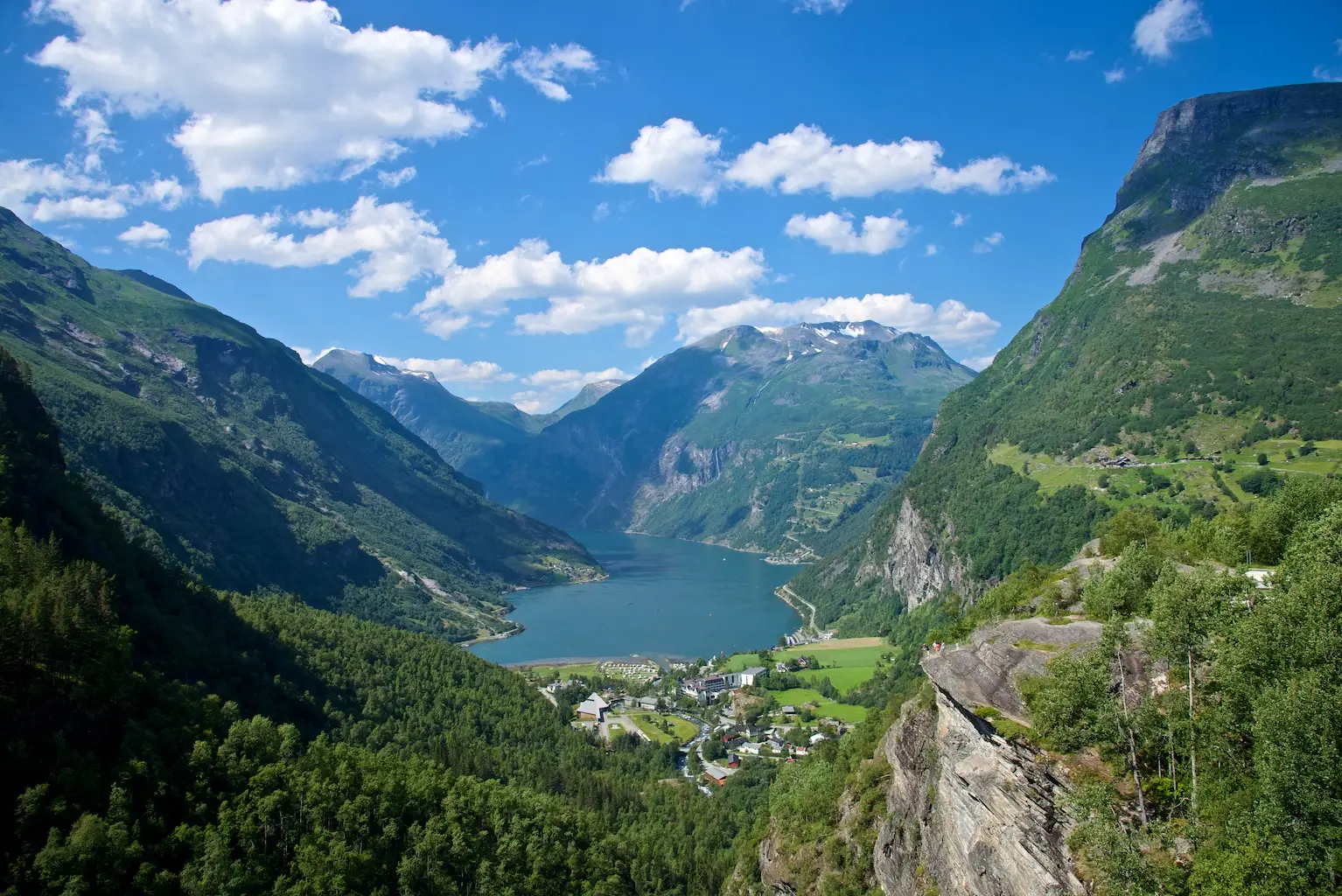
Geiranger, located in the stunning Sunnmøre region of Møre og Romsdal county in Norway, is a must-visit destination for its breathtaking natural beauty and rich cultural history. This small tourist village, nestled at the head of the Geirangerfjord—a branch of the large Storfjorden—is renowned for its spectacular scenery and has been recognized as the best travel destination in Scandinavia by Lonely Planet. The Geirangerfjord area is a UNESCO World Heritage Site, celebrated for its dramatic landscape, including the iconic Seven Sisters waterfall and its counterpart, “The Suitor”.
Visitors can enjoy a range of activities, from exploring jaw-dropping lookouts like Ørnevegen (“the Eagle Road”), Flydalsjuvet, and the Geiranger Skywalk Dalsnibba, which offers unparalleled views of the fjord from 1,500 metres above sea level. Hiking is also a popular activity, with trails leading to stunning natural attractions such as the Storsæterfossen waterfall, which allows hikers to walk behind its cascading waters, offering a unique perspective and fantastic photo opportunities.
Waterfall enthusiasts will be in awe of the numerous waterfalls that adorn the fjord, with the Seven Sisters being particularly noteworthy for their majestic beauty. These waterfalls, alongside others like the Bridal Veil (“Brudesløret”), contribute to the fjord’s fame and allure.
For those interested in the traditional fjord life, a visit to the historic farms such as Knivsflå offers a glimpse into the past and an understanding of how the rugged landscape was utilized by earlier generations.
Given Geiranger’s popularity, especially during the tourist season from May to September, it serves as Norway’s third-largest cruise ship port. This influx of visitors supports a vibrant tourism industry, with hotels, camping sites, and tours of nearby historic farms available for guests.
The best time to visit Geirangerfjord is early summer (May or June) when the waterfalls are at their fullest, or during mid to late summer (July to August) for the best weather conditions. Traveling to Geiranger is accessible by boat, allowing visitors to fully experience the fjord’s beauty, or by car, with scenic routes offering stunning views of the fjord and its surroundings.
For further information and to plan your trip, you can visit the official tourism websites such as Visit Norway and Fjord Norway.
Drive:
Geiranger via Trollstigen Trollstigen (approx. 4 hours) and stop at Trollstigen viewpoint.
Explore:
Geiranger and visit the Norwegian Fjord Centre . Mayby enjoy a late evening fjord cruise (book in advance).
Eat:
Have lunch at Café Ole .
Stay:
Set up camp at Grande Hytteutleige og Camping or free camp Park4night – Geiranger
-¤-
Day 5: Geiranger to Ålesund – Atlantic Road Camping
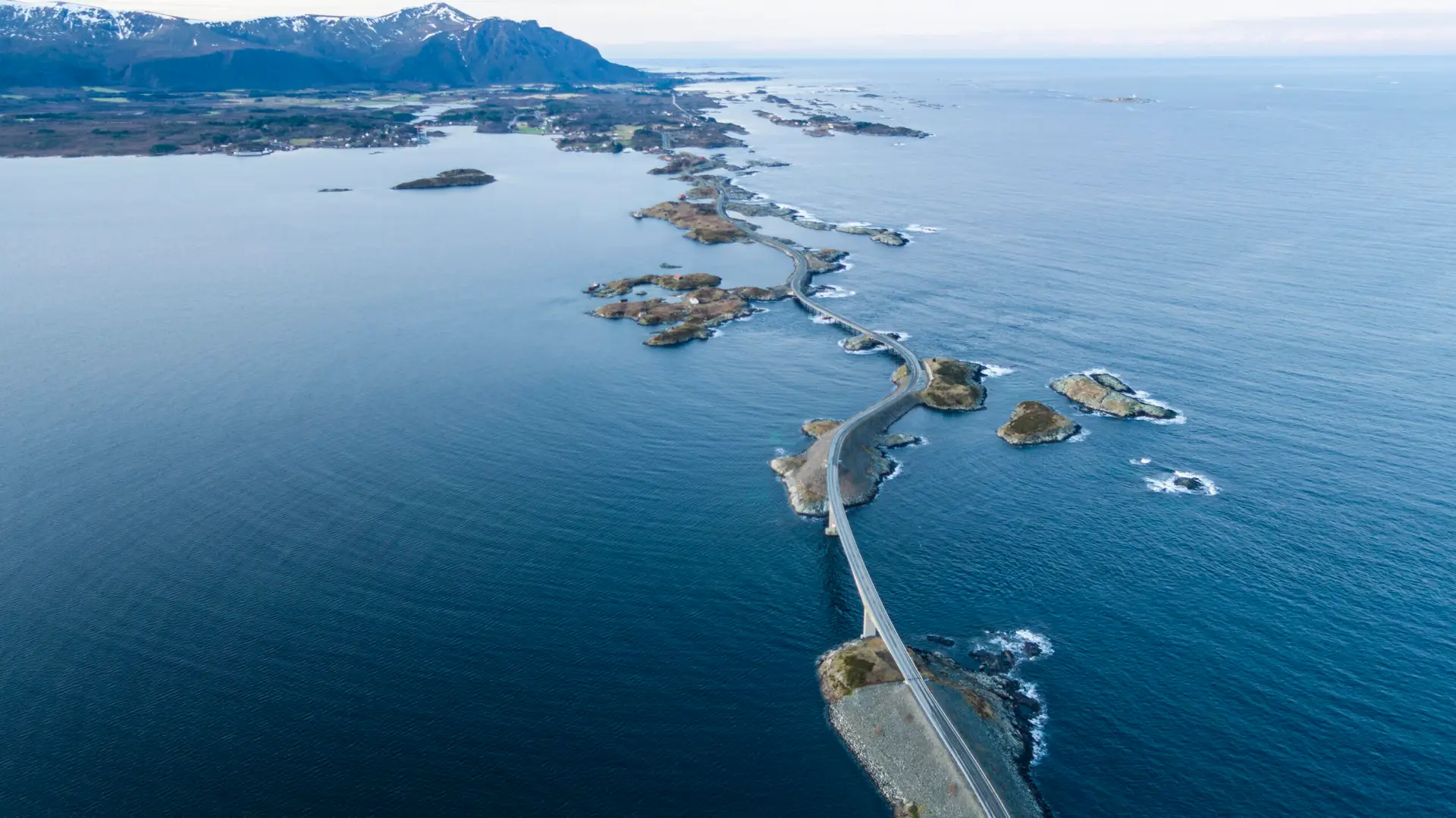
Ålesund, known for its unique concentration of Art Nouveau architecture, offers a wealth of activities and sights for visitors. This picturesque coastal city is a gateway to the iconic fjords of Norway, including Geirangerfjord and Hjørundfjord, and is surrounded by the natural beauty of the Sunnmøre Alps, making it an ideal base for exploring the stunning landscapes Norway is famous for.
One of the top things to do in Ålesund is to hike up to the Mount Aksla Viewpoint for panoramic views of the city and its archipelago. For those interested in local cuisine, Ålesund is the home of klippfisk (dried and salted cod), a staple in the Norwegian diet, particularly in the dish bacalao. The downtown XL Diner is renowned for its klippfisk specialties.
For history and culture enthusiasts, the Ålesund Church with its beautiful stained glass windows, and the Sunnmøre Museum, showcasing the region’s cultural and social history through an open-air collection of traditional Norwegian buildings, are must-visits. Adventure seekers can take a fjord cruise in Hjørundfjord or explore the surrounding natural beauty through hiking or kayaking.
Ålesund offers a range of accommodation options, from luxury and mid-range hotels in the city center to budget-friendly hostels and apartments. Booking in advance is advisable, especially during the peak tourist season.
The city is accessible by air, with flights from major Norwegian cities, and by sea, with many visitors arriving via cruise ship. Once in Ålesund, the city’s compact size makes it easy to explore on foot, though there is also a local bus service for reaching farther attractions.
For further information and assistance during your stay, the Tourist Information Office in Ålesund provides a wide selection of brochures, souvenirs, and can help with booking accommodations, sightseeing tours, and other activities.
For more detailed insights and to plan your visit, you can explore the comprehensive guides available on Life in Norway, Visit Norway, and PlanetWare.
Drive:
To Ålesund via the ferry (approx. 2.5 hours) and explore the city and take a lunch before heading towards the Atlantic Road (approx. 3 hours) in the evening.
Tips: Take a early morning kayak tour in Geirangerfjord before departure.
Google Map Route – Geiranger to Ålesund
Google Map Route – Ålesund to Atlantic Road
Explore:
Ålesund and the Art Nouveau architecture
Eat:
Lunch at Sjøbua
Stay:
Camp at a designated spot along the Atlantic Road (Park4night – Atlantic Road) or at Atlanterhavsveien Sjøstuer Atlanterhavsveien Sjøstuer .
-¤-
Day 6: Atlantic Road to Trondheim
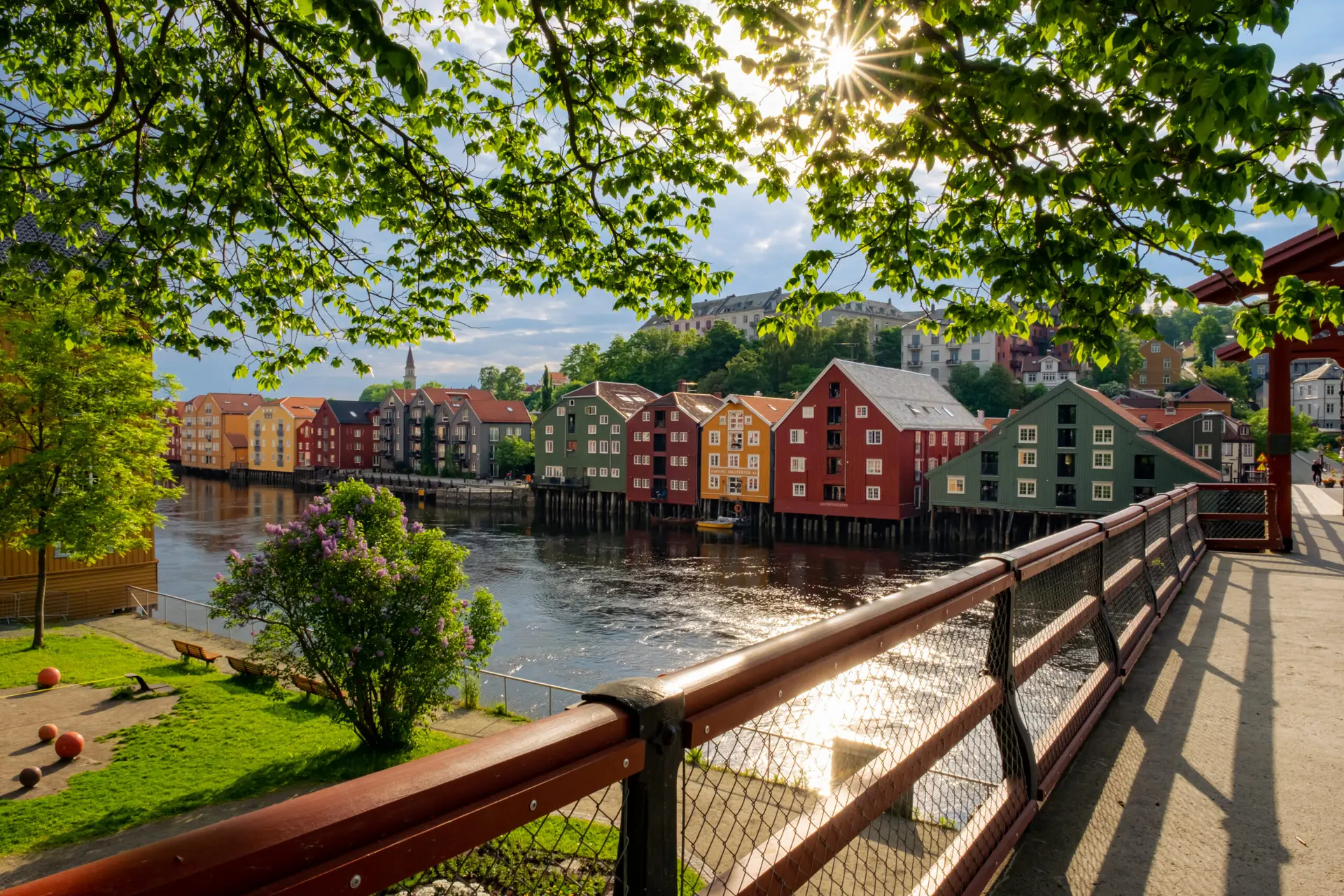
Tips: Explore the Atlantic Road at sunrise and take a breakfast at a local café.
Trondheim, a city where history meets modernity, offers a unique blend of cultural experiences, historical sites, and vibrant city life. Known for its innovation, particularly in technology, science, and medicine, Trondheim is also celebrated for its rich tradition and culinary excellence, especially as a European Region of Gastronomy.
A must-visit is the Nidaros Cathedral, Norway’s largest church and an important pilgrimage site, adorned with over 5,000 sculptures, making it a marvel for both pilgrims and tourists. The city’s charm extends to Bakklandet, a neighborhood known for its well-preserved timber buildings and narrow cobblestone streets, offering cozy cafes, boutiques, and restaurants.
For those interested in exploring outdoors, Trondheim provides numerous activities. You can kayak along the Nidelva river, enjoy the scenic views from the Old Town Bridge, or take a leisurely walk through Bakklandet. The city’s proximity to water means sightseeing boat trips to Munkholmen, a historical island with a rich past, are also popular among visitors.
The harbor area, with its colorful old wooden warehouses, now converted into boutiques and homes, is a picturesque spot best enjoyed through harbor tours or by kayaking for a unique view of the city. For a panoramic view of Trondheim, the Tyholttårnet, a 124-meter-tall radio tower with a revolving restaurant, offers a 360-degree view of the city.
Trondheim’s museums offer a deep dive into its history and culture. The Trondheim Maritime Museum and the Sverresborg Trøndelag Folk Museum, which surrounds the ruins of King Sverre’s castle and features over 80 buildings representing Norwegian history and culture, are highlights for those looking to learn more about the region’s past.
For assistance planning your visit, including finding accommodation and navigating the city, Trondheim’s tourist information can provide a wealth of resources, from maps to event calendars.
To explore more about what Trondheim has to offer, from its rich historical sites to its vibrant nightlife and outdoor activities, you can visit Visit Trondheim and Visit Norway for comprehensive guides and inspiration for your trip.
Drive:
Head towards Trondheim (approx. 4 hours).
Explore:
Visit the Nidaros Cathedral and the Old Town Bridge
Eat:
Dinner at Baklandet Skydsstation
Stay:
Flakk Camping or find a freecamp spot near the city (Park4night – Trnodheim)
-¤-
Day 7: Trondheim to Dovrefjell – Musk Ox Safari
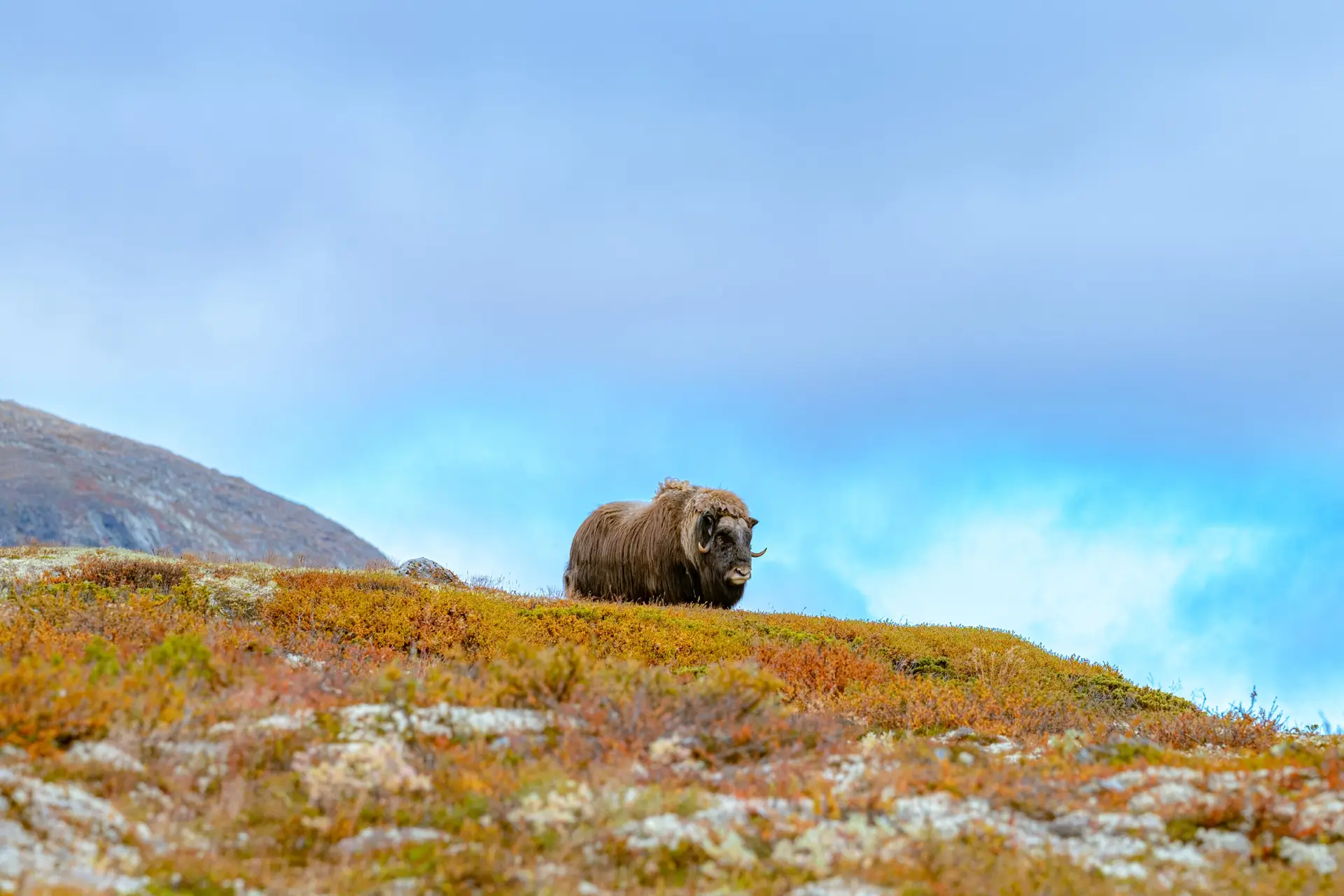
Drive:
Early departure to Dovrefjell National Park (approx. 3 hours).
Explore:
Join a guided musk ox safari (book in advance) in Dovrefjell and visit the Snøhetta viewpoint later in the afternoon. Visitor Centre – Villrein
Eat:
Take a Lunch in the park and prepare a campfire dinner or dinner in the van
Stay:
Camp at a DNT cabin DNT cabin – Snøheim or set up a freecamp Park4night – Dovrefjell (follow the right to roam responsibly).
-¤-
Day 8: Return to Oslo
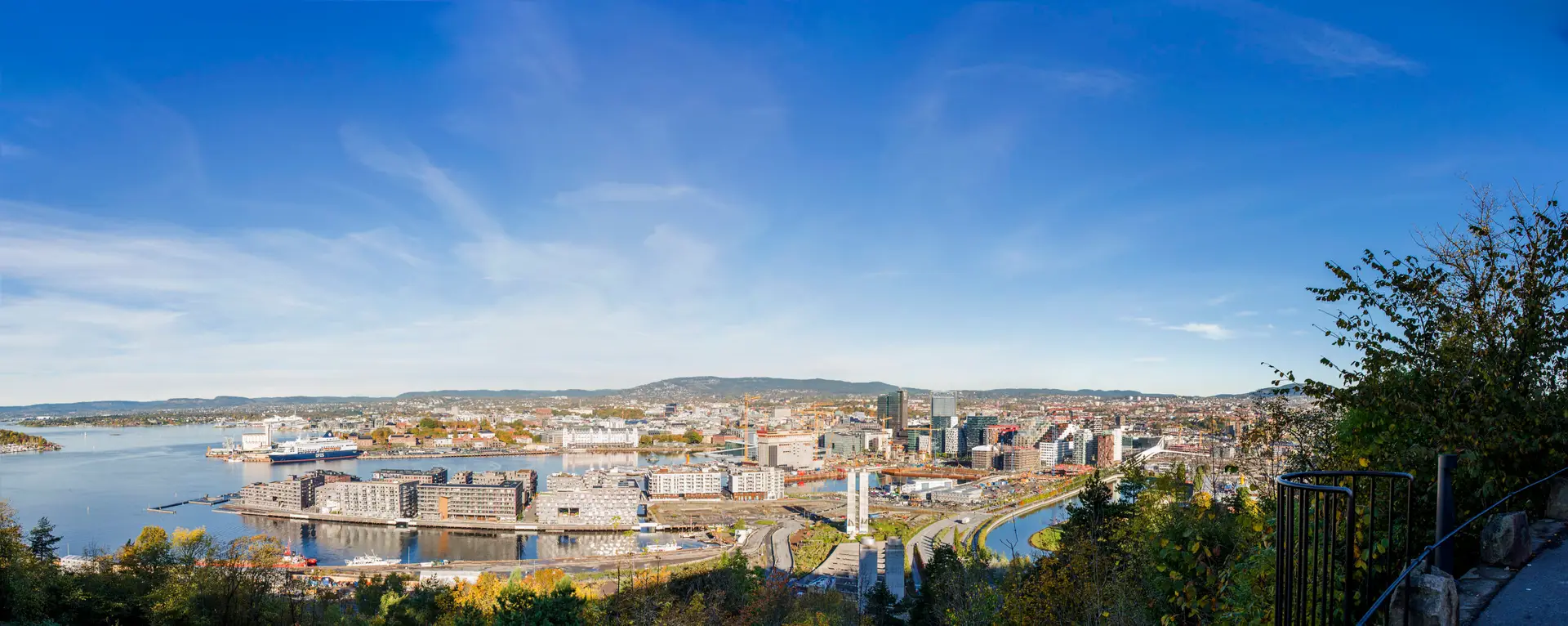
Drive:
Early start towards Oslo (approx. 4.5 hours).
Tips! Stop and anjoy a breakfast in Lillehammer.
Drop Off:
Arrive back in Oslo for campervan drop-off.
Tips! If time allows, visit the Oslo Opera House and walk along the harbour and take a final dinner at a local Oslo restaurant, such as Maaemo Maaemo for those seeking a fine dining experience or Mathallen for a variety of local foods in a casual setting.
-¤-
General Tips:
Book campsites in advance during peak season.
Check road conditions, especially for routes like Trollstigen.
Always follow the “Right to Roam” law responsibly when free camping.
Make reservations for activities like fjord cruises and kayak tours ahead of time.
Ready to book? Find your campervan for your journey here!
